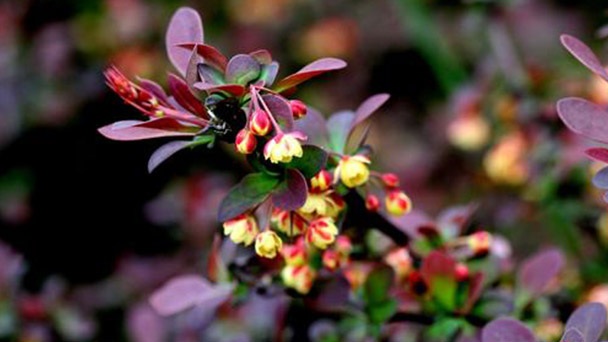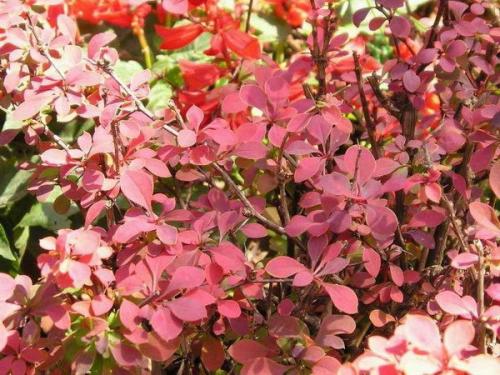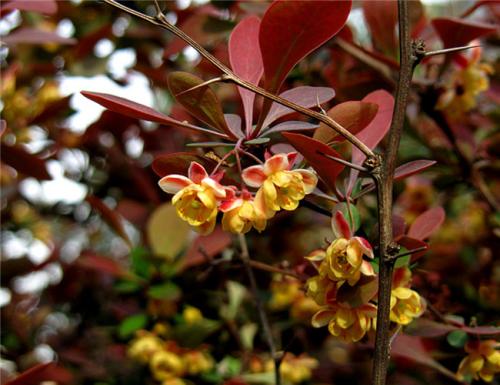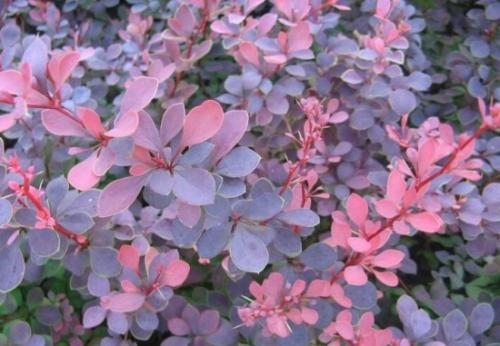Japanese Barberry profile
Written by Maggie
Dec 11 2020

Japanese Barberry has strong adaptability, likes sunlight and tolerates half shade, but some leaves will turn green when the light is slightly poor or the density is too high.It’ cold resistant, but not afraid of hot temperatures, resistant to pruning.Landscape and evergreen trees are commonly used as surface color layout, can be used to decorate the flower bed, flower mirror, is an important tree color in the combination of landscape.
Japanese Barberry picture

Japanese Barberry morphological characteristics
The Japanese Barberry is a natural variant of the Japanese Barberry, deciduous shrub.Young branches are reddish green, glabrous, old branches dark red with streaks;Internodes 1-1.5 cm long.Leaves rhomboid, ovate, 5-20 (35) mm long, 3-15 mm wide, apex obtuse, base subducted into short stalks, entire, surface yellowish-green, abaxially grayish white, papillate, glabrous on both surfaces.2-5 flowers umbels are with short racemes and nearly clustered, or tufted without racemes, pedicels 5-15 mm long, perianth yellow;Bracteoles reddish, ca. 2 mm long, acute;Outer sepal ovate, 4-5 mm long, ca. 2.5 mm wide, apex subobtuse, inner sepal slightly larger than outer sepal;Petals are oblong-obovate, 5.5 -- 6 mm long, ca. 3.5 mm wide, apex emarginate, near glands above base;Stamens are 3-3.5 mm, another apex truncate.Berry red, elliptic, ca. 10 mm long, slightly lustrous, with 1-2 seeds.
The original species is a deciduous shrub, generally about 1 m tall, much branched.Branches spread, with slender ribs, young branches reddish green, glabrous, old branches dark red;Stem spines are simple, even 3-branched, 5-15 mm long;Internodes 1-1.5 cm long.Leaves are thin papery, obovate,
Spatulate or rhombic is ovate, 1 -- 2 cm long, 5 -- 12 mm wide, apex abruptly acute or obtuse, base narrowly cuneate, entire, upper green, abaxially gray-green, midrib slightly uplifted, biconvex veins inconspicuous, glabrous;The petiole length is 2-8 mm.2-5 flowers form a racemose inflorescences, or umbels subclustered, or tufted without racemose;Pedicels 5-10 mm, glabrous;Bracteoles are ovate-lanceolate, ca. 2 mm long, reddish;Flowers are yellow;Outer sepals are ovate-elliptic, 4 -- 4.5 mm long, 2.5 -- 3 mm wide, apex subobtuse, reddish, inner sepals broadly elliptic, 5 -- 5.5 mm long, 3.3 -- 3.5 mm wide, apex obtuse;Petals are oblong-ovate, 5.5 -- 6 mm long, 3 -- 4 mm wide, apex slightly concave, base slightly clawed, with 2 proximal glands;Stamens 3-3.5 mm, septum not extended, apical truncate;The ovary contains ovules 1-2, no fundus.Berries are elliptic, ca. 8 mm long, ca. 4 mm in diam., bright red, no persistent style.Seeds 1-2, brown.The flowering period is April-June, and the fruiting period is July-October.
Japanese Barberry's growth habit
Japanese Barberry prefers cool and humid environments, strong adaptability, cold and drought resistance, water and waterlogging resistance, light and shade resistance, strong tillering ability, pruning resistance, can adapt to all kinds of soil, and grow better in fertile and deep soil with good drainage.
However, when the light is slightly poor or the density is too high, part of the leaves will return to the green landscape and evergreen tree as the surface color layout.It can be used to decorate the flower bed, flower mirror, is an important tree color combination in the landscape.

Distribution of Japanese Barberry species
Japanese Barberry is originally produced in Japan, and it is produced in Zhejiang, Anhui, Jiangsu, Henan, Hebei and other places in China.It is widely cultivated in all provinces and cities in China, and is basically planted in all northern cities.
The main use of Japanese Barberry
Japanese Barberry is famous for its fine branches and thorns.It has small yellow flowers in spring, red leaves in autumn, and beautiful red fruits after ripening. It is a good material for fruit observation, leaf observation and thorn hedge.In garden it is commonly used and evergreen tree as a surface color layout, and the effect is better.Japanese Barberry can also be potted for viewing or pruning fruit bottles for indoor decoration.Its plant is the intermediate host of wheat embroidery disease.Japanese Barberry is an ornamental plant with beautiful leaves, flowers and fruits. It is often used as hedgerows or bushes in the corner of the garden road, dotted among pools and rocks.It is also used for large flower beds with borders or cut into spherical symmetrically arranged plants.It is suitable for slope land to be planted in pieces, and it is used to decorate the flower bed and flower border with evergreen trees, which is an important tree species in the combination of color blocks in landscaping.Japanese Barberry can also be potted for viewing or pruning fruit bottles for indoor decoration.As a result of more shade tolerant, it is a good material for planting under trees and building shade.Also it can be placed indoor and outdoor after potted.Because Japanese Barberry is relatively cold, it can be placed in the hallway and corridor where the temperature is low in winter, which is beyond the reach of many greenhouse foliage plants.
Japanese Barberry is an important colored shrub in landscaping, which is often combined with golden privet and poplar to form color blocks, ribbons and patterned flower beds.Japanese Barberry can be planted on the roadside or dotted in the lawn. In addition, Japanese Barberry is also a good material for bonsai making.
The root and stem of Japanese Barberry contain berberine, which can be used as raw material to extract berberine.Folk branch, leaf decocted water, can treat conjunctivitis;Root bark can be used as a stomach tonic.The stem can be used as yellow dye when the outer skin is removed.

Latest Updated
- Benefits of Bugleweed - 7 Science-backed Health Benefits
- Bugleweed Dangers & Side Effects - Is It Poisonous?
- How to Plant Evergreen Trees - What You Should Know
- When to Plant Evergreens - Grow Guide for Evergreen Trees
- 12 Wonderful Evergreen Shrubs for Your Garden
- 12 Popular Evergreen Plants with Pictures for Beginners
- When And How To Prune A Lilac Bush Like a Pro
- How to Grow & Care for Lilac Vine (Hardenbergia Violacea)
- Japanese Lilac Tree (Syringa Reticulata) Care & Propagation Guide
- Shumard Oak Pros and Cons - What to Know
Popular Articles
- Winter maintenance of Antirrhinum Majus
- How to Grow Terminalia Mantaly Tree
- How to Grow and Care for Crossostephium Chinense
- How to grow Antirrhinum Majus in spring
- Peristeria Elata (Dove Orchid) Profile: Info & Care Guide
- Underwatered Snake Plant (Sansevieria Trifasciata) - Signs And How To Fix
- How to Care for Brazilian Jasmine Plant (Mandevilla Sanderi)
- How to Grow & Care for Graptopetalum Purple Delight in Summer
- Rosa Chinensis (China Rose): Plant Growing & Care Tips
- How to Care for Baby Sun Rose (Aptenia Cordifolia)